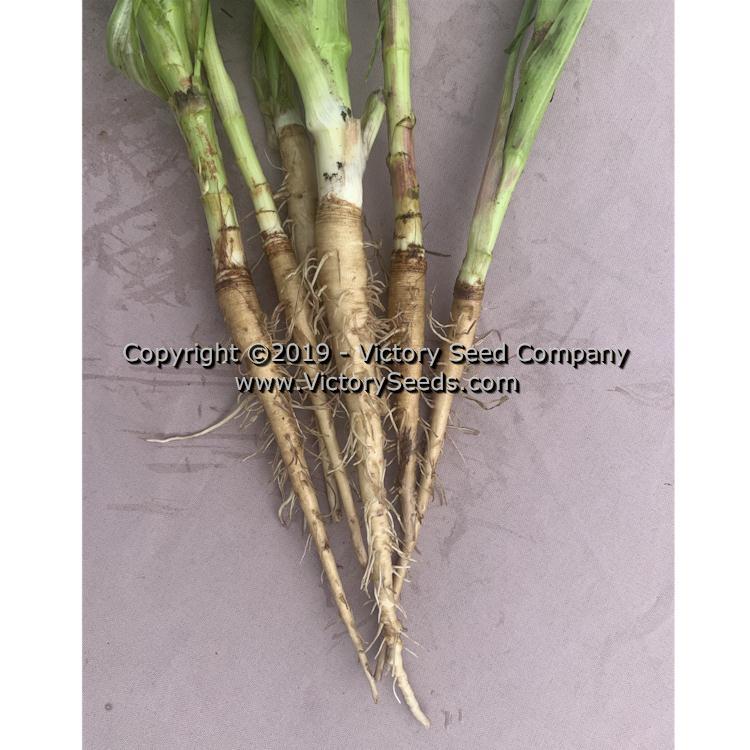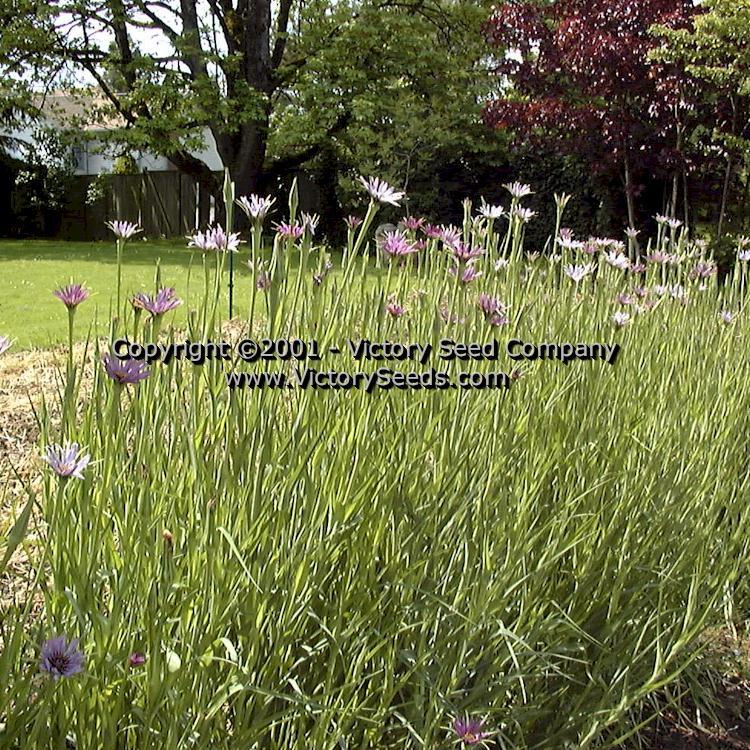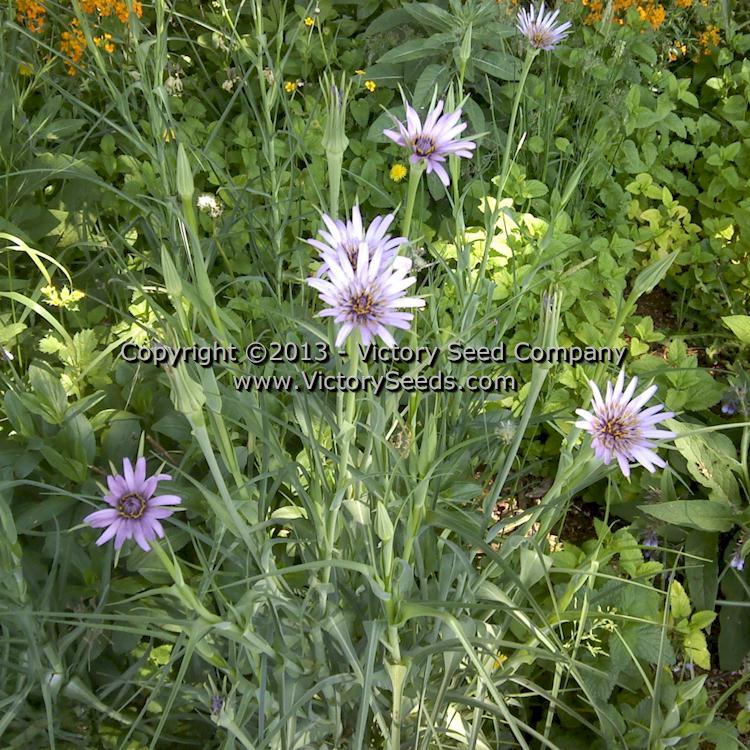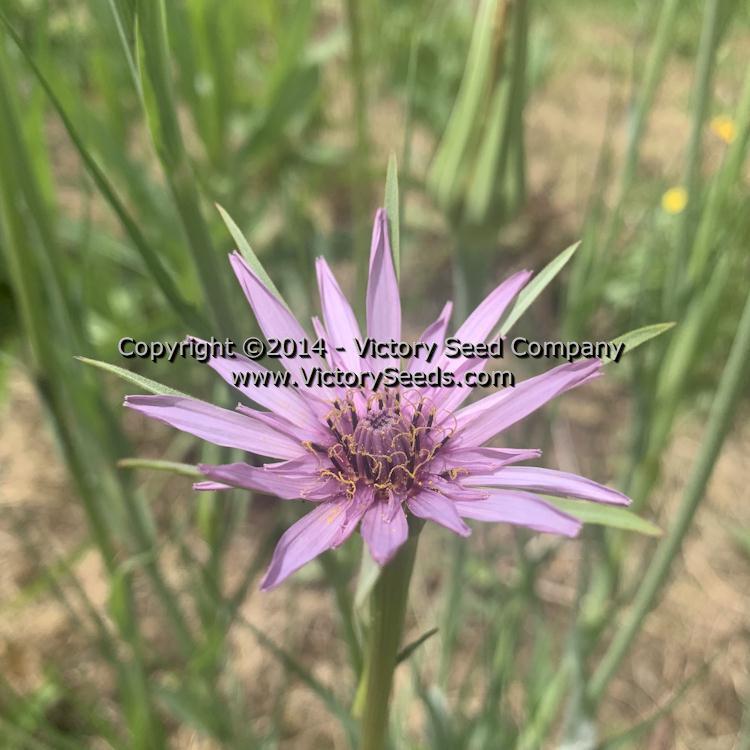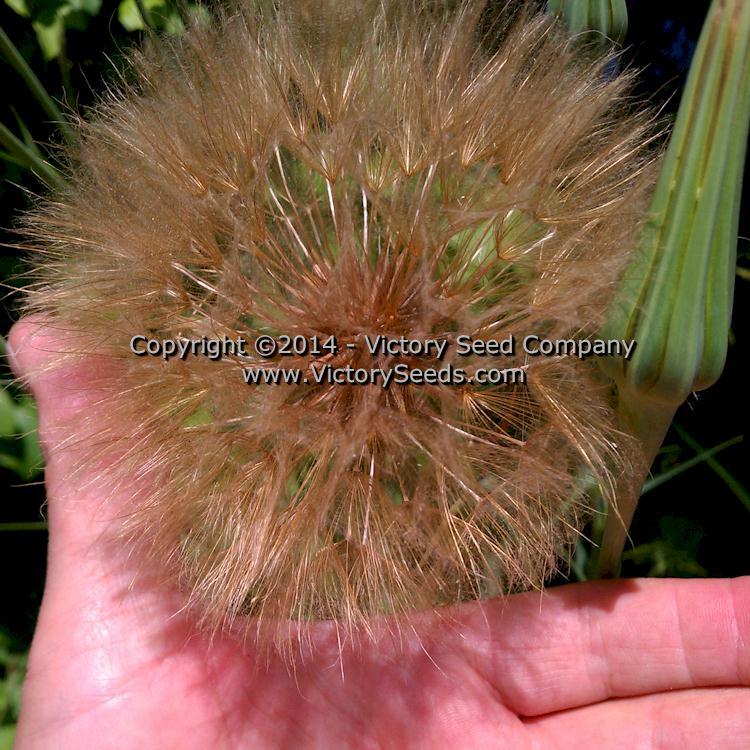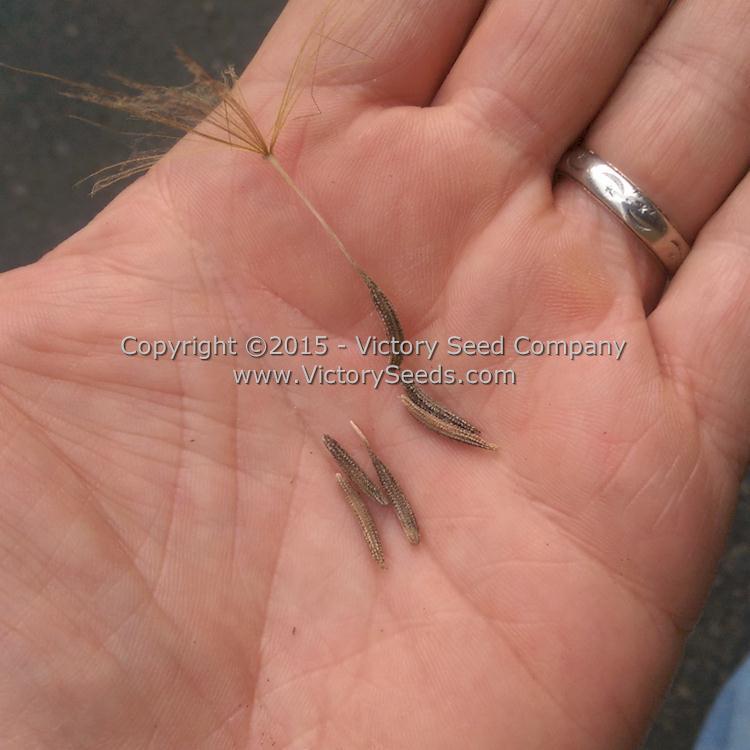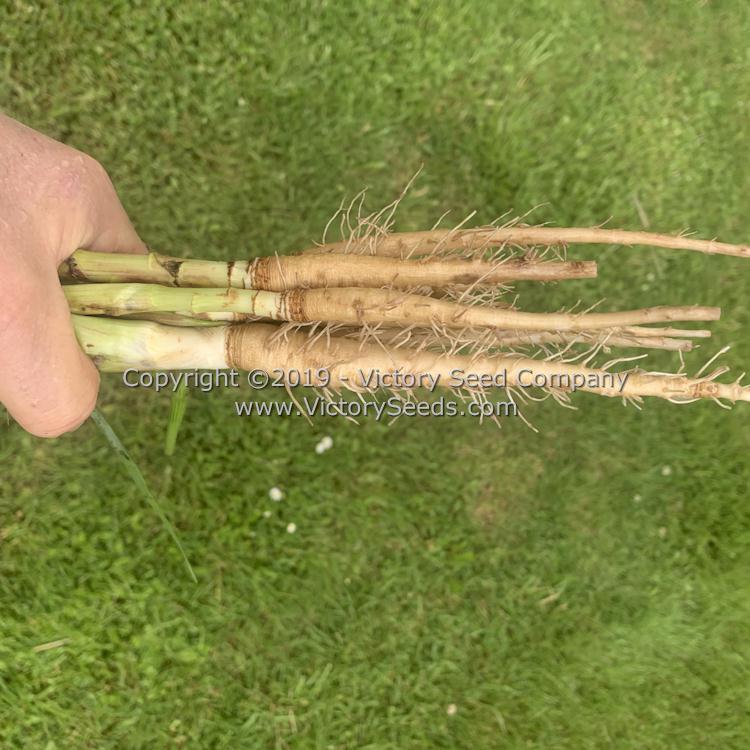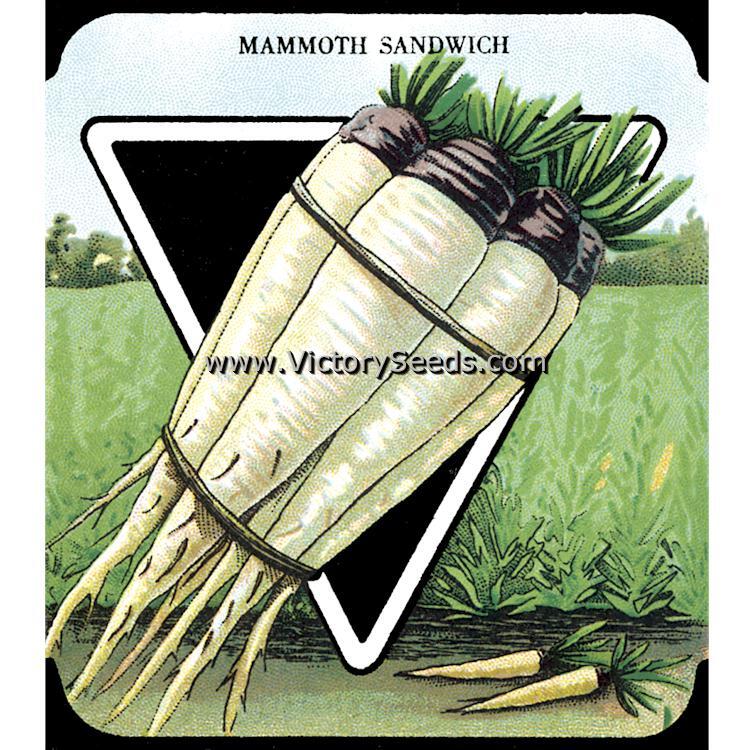








Mammoth Sandwich Island Salsify
Price: $2.75
SKU: 3350011If you are looking for a fresh vegetable for your winter dinner table, salsify is a hearty root that over winters well. Also called "Oyster Plant," salsify roots can be baked, dipped in batter and deep-fried, or served au gratin. If you choose to boil them, it is best, for flavor purposes, to leave the light colored skin on until after cooking. Click here for recipes.
The seeds can take a long time to germinate (up to twenty-one days) and frequently fail to germinate if they are not kept consistently moist until the seedlings are established. Since they are a root crop, they prefer deep, stone-free soil in order to form the straightest, most attractive roots. The roots are hardy and can be left in the ground over winter. In colder climates, you may be required to heavily mulch with straw to protect from freezing. In extremely cold areas, lifting and storing in sand in a root cellar, like other root crops, will be necessary.
As a biennial salsify flowers and goes to seed the second year. The blossoms are quite attractive and can make a nice ornamental display in the backs of flower beds. After blooming the flower pods will open up and look like a giant dandelion.
To save seeds effortlessly, collect the seed heads after they open but before they disperse, and dry them in paper sacks. Each packet contains two grams, which is approximately 195 seeds.
Harvest Information: When sown in the spring, the roots are ready for harvesting from mid-October onward (typically 16 to 25 weeks). The roots are hardy and can be left in the soil, until needed, well into April. Look for well developed specimens that are heavy for their size, and as straight (not too gnarled) as possible. They may be stored, unwashed, in plastic for up to a week in the refrigerator.
Nutritional Information: Because of its nutritional value, salsify is included as a "Very Special Survival Vegetable" by John A. Freeman in his 1982 classic, "Survival Gardening."
|
Nutritional Facts Serving Size 1 cup cooked (135g) |
|
| Amount Per Serving | |
| Calories | 92 |
| Total Fat | 0g |
| Protein | 3.7g |
| Carbohydrates | 21g |
| Dietary Fiber | 4.2g |
| Minerals | |
| Sodium Potassium Calcium Vitamin C |
21.6mg 382mg 63.5mg 6.2mg |
Customer Reviews:
By Timothy Major on December 2, 2020
I was puttering around the garden this afternoon and spotted my salsify sitting where it has been sitting ever since spring. I'd never grown it before, and wasn't sure what to do with it, but I grabbed a pitchfork, and there were some beautiful roots underneath the unique greenery!
I took them in to my wife and she figured out how to cook them and they are very delicious!!! We very much enjoyed them, and will definitely be planting more next spring.
They did take a long time to come up (I planted them in between radish rows so I wouldn't forget I'd planted something there), watered them well until they came up, per instructions, then they just kind of sat around all summer, growing slowly.,br>
Had no pest damage, or disease, and even survived the times I watered them poorly this summer. They have been sitting outside in freezing weather and look perfectly happy! The greens look more like a fancy grass, but it's pretty and was fun to try out!
Definitely recommend this!
By Alyx Shultz on April 26, 2015
You cannot go wrong with salsify from Victory seed. I planted it as a surprise for a home sick friend. She ate it regularly as a kid, but couldn't find it in our area. It took FOREVER to come up, but once it did, it grew like a weed....until the goats ate it to the ground. I wrote it off and ignored that portion of the garden for the rest of the season. When I went to prepare the plot this spring I was thrilled to find a whole row of thriving salsify! I harvested all but one plant and proudly delivered it to my friend. She was thrilled with the salsify. I am thrilled with Victory Seeds for propagating novel, fun, hardy crops like this. I will definitely plant salsify again.
By Amber Schooley on June 27, 2013
These are the easiest seeds I have ever grown! No problems with diseases or pests, even when insects were on the plants only 6 inches away. They taste somewhere between artichokes and potatoes to us. Fried they make a healthier, better-tasting substitute for French fries.
